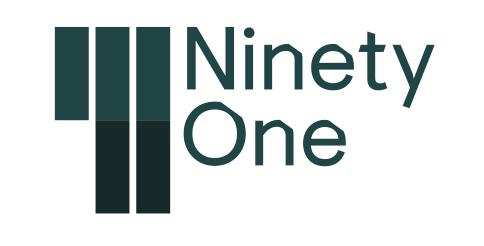
Ninety One Diversified Income

This fund aims to provide investors with attractive, sustainable income, with scope for capital growth. The fund targets a yield of around 4% per annum, distributed on a monthly basis with less than half the volatility of UK equities. The fund uses a mixture of growth, defensive and uncorrelated assets to achieve its returns.
Our Opinion
Fund Managers
Fund Managers

John is Head of Multi-Asset Income at Ninety One, where he co-manages the Multi-Asset Income strategies and focuses on macroeconomic research. He joined the firm through its acquisition of Guinness Flight in 1993, and has held senior roles including Co-Head of Fixed Income & Currency. Before this, John managed South African fixed income assets from 1998 to 2004 and worked in London and Tokyo as a global bond and currency portfolio manager for Mitsui Trust Asset Management. He graduated with honors in Chemistry from the University of Oxford in 1990 and is a CFA Charterholder.

Jason is a portfolio manager in the Multi-Asset team at Ninety One, where he co-manages the Multi-Asset Income strategies and focuses on equity research. He joined the firm in 2015 as an analyst responsible for equity exposure. Before Ninety One, Jason was an assistant fund manager at Pan Asset Capital Management and worked as an analyst at BlackRock. He studied Law at Oxford University and holds both an Investment Management Certificate and CFA charter.
Fund Performance
Risk
Investment process
The fund targets a yield of around 4% annually distributed monthly, by principally investing in fixed income securities and some equity positions. The portfolio also uses hedging for downside protection, with the fund targeting half the volatility of UK equities.
The three-stage process starts with Ninety One’s specialist research group identifying ideas across their respective areas with the potential for resilient income. For bonds, this will start with a quantitative screen. For example, if they buy a sovereign bond they will target a mixture of yield, security of income and capital gain potential. For equities, they will evaluate the dividend yield (and its history of paying it); the leverage a company has; profitability, and valuation versus its peers and its own history. The multi-asset team will leverage off other teams within the asset manager to help with analysis at this stage.
The second stage is portfolio structure – here the asset allocation forum will decide on a blend of growth, defensive and uncorrelated assets. The final stage is risk management, where the asset allocation team looks to balance income, capital growth and risk objectives.
The final portfolio is well diversified with over 200 names, the majority of which are held in fixed income. The team uses hedging to reduce exposure when risk increases. They do this by monitoring risk signals, using temporary hedges as risk increases and lifting them when it declines.
Risk
The team takes a proprietary approach to risk management through categorising assets as growth, defensive or uncorrelated. It can and will use hedging to reduce exposure when risks increase in markets.
ESG
ESG - Limited
This fund considers ESG factors throughout the process. The multi-asset approach means each asset class has a different set of factors to consider, which the managers conduct as part of the bottom-up analysis in the process. The team uses a materiality risk assessment model to help identify and evaluate these issues. This has three steps: to identify what ESG factors could impact the investment; over what time period these are likely to occur; and to assess whether these risks are factored into valuations. This allows for a consistent approach across different holdings in the portfolio and avoids the risk of these issues not being factored into valuations. However, this stops short of having formal rules of what can and can’t be in the portfolio, meaning that ESG laggards are tolerated, if the team feels they are being adequately rewarded for taking them. As such, the fund will often hold firms considered ESG laggards, with the expectation of improvement and/or financial gain. Ninety One will also use its ownership to influence and improve behaviour through proxy voting and engagement with the management teams of firms.







